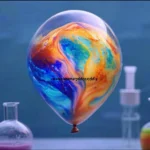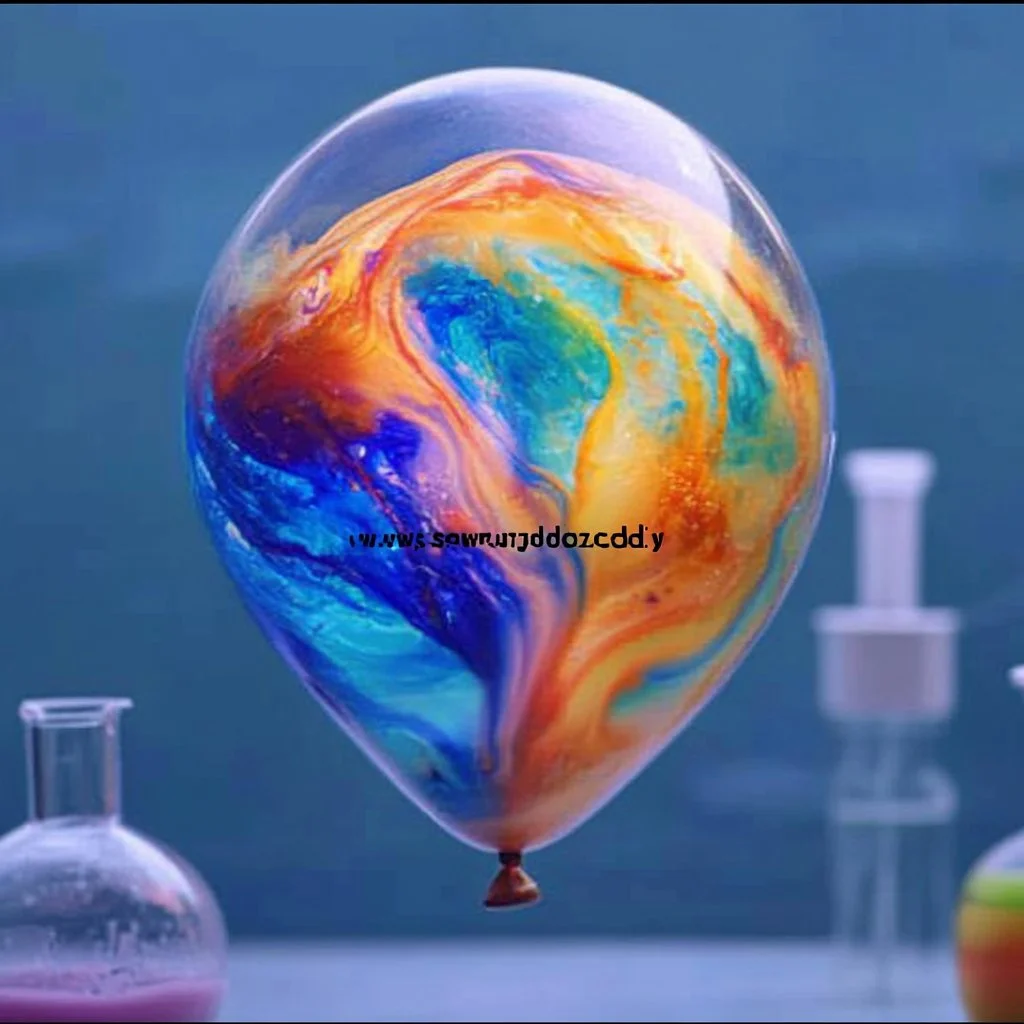The Baking Soda Balloon Experiment is a delightful and fun science activity that captivates both kids and adults alike. This simple yet fascinating experiment demonstrates a chemical reaction between baking soda and vinegar, resulting in gas production that inflates a balloon. It’s an excellent way to combine education with entertainment, making science accessible and enjoyable for all ages. Perfect for classroom demonstrations, birthday parties, or a cozy family activity, this project encourages curiosity and hands-on learning. Not only does it teach important scientific concepts, but it also nurtures creativity and critical thinking as participants explore the world around them. Whether you’re an educator looking for a classroom activity or a parent seeking to engage your children, this experiment will surely spark enthusiasm and wonder!
Why You’ll Love This Baking Soda Balloon Experiment:
- Easy to Set Up: Requires minimal materials that are often already in your home.
- Fun Visuals: Watching the balloon inflate is exciting and visually captivating.
- Educational: Teaches chemical reactions and basic scientific principles.
- Safe for Kids: Uses common household ingredients and is non-toxic.
- Customizable: Experiment with different balloon sizes, colors, or even additional ingredients.
Materials:
- Baking soda (about 2 tablespoons)
- Vinegar (around 1 cup)
- A balloon (preferably 9-inch or larger)
- A plastic bottle (empty, with a narrow neck)
- Funnel (optional, for easier pouring)
- Measuring spoons and cups
Full Step-by-Step:
1. Prepare the Balloon
- Use the funnel to carefully pour 2 tablespoons of baking soda into the balloon.
- Stretch the balloon’s neck to fit the funnel; this helps avoid spilling.
2. Add Vinegar to the Bottle
- Pour 1 cup of vinegar into the plastic bottle; you may also add food coloring for visual effects if desired.
3. Attach the Balloon
- Carefully stretch the balloon over the bottle’s neck without spilling the baking soda into the vinegar yet.
4. Start the Reaction
- Once the balloon is securely attached, lift the balloon allowing the baking soda to fall into the vinegar.
- Stand back and watch the reaction begin!
5. Observe the Inflation
- As the gas builds up, the balloon will start to inflate. This reaction produces carbon dioxide, creating a fun visual!
6. Discussion and Clean Up
- After the excitement, discuss what happened. Clean up any spills and safely dispose of the materials.
Tips & Variations:
- Balloon Colors: Use different colored balloons for a festive effect.
- Adjust Quantities: Experiment with different amounts of vinegar and baking soda for varying effects.
- Add Scent: Add a few drops of essential oil or vanilla extract to the vinegar for a pleasant smell during the experiment.
- Educational Twist: Print out a science fact sheet about the chemical reaction involved to enhance learning.
Frequently Asked Questions:
1. Can we use other types of vinegar?
Yes! While white vinegar is commonly used, you can experiment with apple cider vinegar or other types, keeping in mind the color and scent may change.
2. What happens if the balloon doesn’t inflate?
Ensure the baking soda properly falls into the vinegar without spills. If it still doesn’t inflate, check that the bottle and balloon seal tightly to contain the gas.
3. Can this experiment be done outside?
Absolutely! Doing it outside can be a great way to minimize mess and enjoy the reaction in an open space.
4. Can I use a larger bottle?
Yes, using a larger bottle may give you more space for a bigger reaction, but you might need to adjust the quantities of baking soda and vinegar accordingly.
Suggestions:
- Try this experiment as part of a science-themed party or birthday celebration.
- Pair it with a related craft, like making volcanoes or rockets, for an engaging science day.
- Encourage kids to document their observations and results in a science journal.
Final Thoughts
The Baking Soda Balloon Experiment serves as a fantastic introduction to the wonders of chemistry. As you dive into this bubbly adventure, feel free to share your experiences or unique variations in the comments! We’d love to hear how you and your family enjoyed this compelling exploration of science!
Print
Baking Soda Balloon Experiment
- Total Time: 5 minutes
- Yield: 1 experiment
- Diet: N/A
Description
A fun science experiment that demonstrates a chemical reaction between baking soda and vinegar, inflating a balloon.
Ingredients
- Baking soda (about 2 tablespoons)
- Vinegar (around 1 cup)
- A balloon (preferably 9-inch or larger)
- A plastic bottle (empty, with a narrow neck)
- Funnel (optional, for easier pouring)
- Measuring spoons and cups
Instructions
- Use the funnel to carefully pour 2 tablespoons of baking soda into the balloon.
- Pour 1 cup of vinegar into the plastic bottle; you may add food coloring for visual effects if desired.
- Carefully stretch the balloon over the bottle’s neck without spilling the baking soda into the vinegar yet.
- Once the balloon is securely attached, lift the balloon allowing the baking soda to fall into the vinegar.
- As the gas builds up, the balloon will start to inflate.
- Discuss what happened and clean up any spills.
Notes
Experiment with different balloon sizes, colors, or scents for a more engaging experience.
- Prep Time: 5 minutes
- Cook Time: 0 minutes
- Category: Science Activity
- Method: Hands-on Experiment
- Cuisine: Educational
Nutrition
- Serving Size: 1
- Calories: 0
- Sugar: 0g
- Sodium: 0mg
- Fat: 0g
- Saturated Fat: 0g
- Unsaturated Fat: 0g
- Trans Fat: 0g
- Carbohydrates: 0g
- Fiber: 0g
- Protein: 0g
- Cholesterol: 0mg

